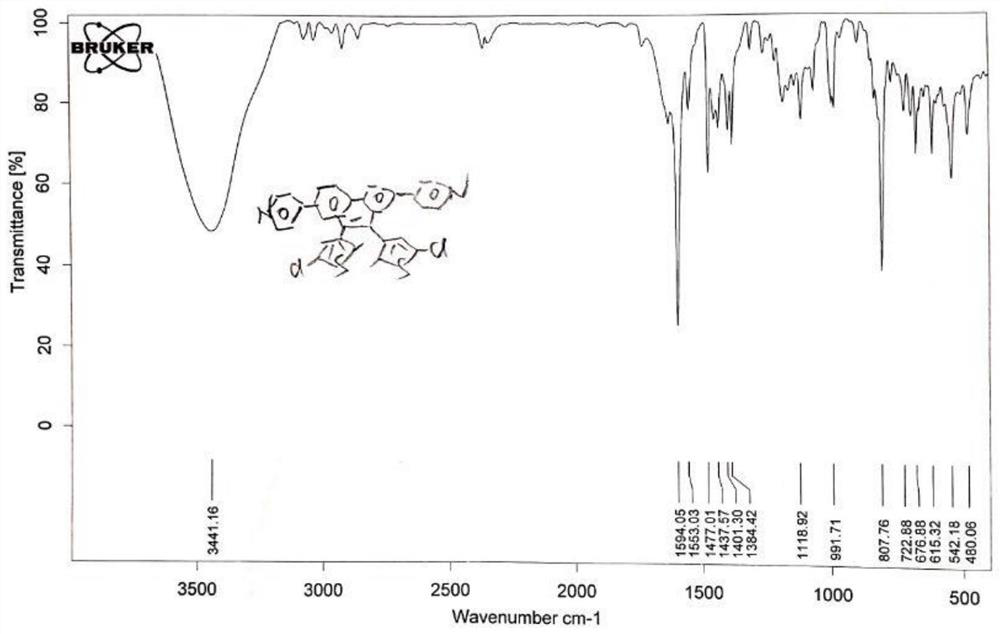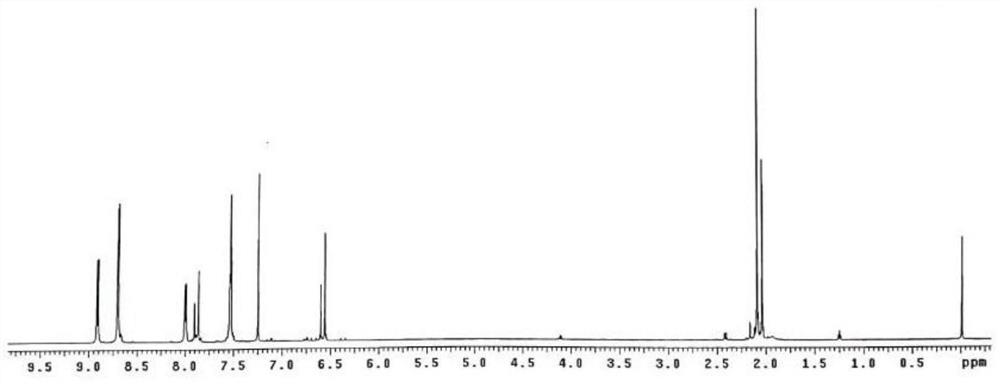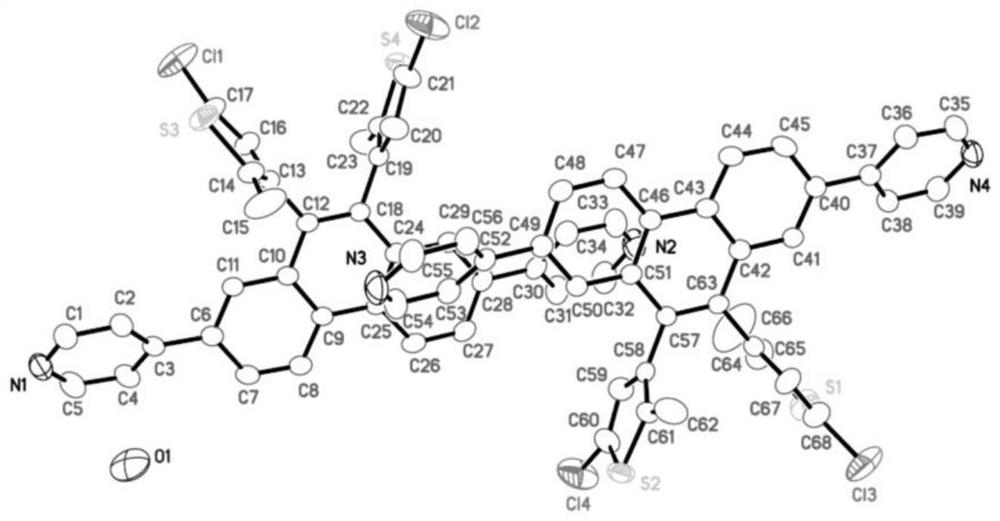Photochromic ligand, re(i) rectangular supramolecular complex, preparation method and application
A photochromic and supramolecular technology, which is applied in the direction of color-changing fluorescent materials, chemical instruments and methods, and compounds of group 7/17 elements of the periodic table, can solve the problems of no ultraviolet photochromic performance and no optical performance, etc.
- Summary
- Abstract
- Description
- Claims
- Application Information
AI Technical Summary
Problems solved by technology
Method used
Image
Examples
Embodiment approach
[0047] The third embodiment of the present invention provides a Re(I) rectangular supramolecular complex, the chemical structural formula of which is shown in 1,
[0048]
[0049] Experiments show that the Re(I) rectangular supramolecular complex formed by the above photochromic ligands still has photochromic properties under ultraviolet irradiation.
[0050] In one or more examples of this embodiment, the single crystal molecular formula of the Re(I) rectangular supramolecular complex is: C40 h 22 Cl 4 N 2 o 6 Re 2 S 2 , the chemical formula is [Re 2 (CO) 6 (C 34 h 22 Cl 2 N 2 S 2 )(μ 2 -Cl) 2 , crystallized in the monoclinic crystal system, belonging to the C2 / m space group.
[0051] In this series of embodiments, the single crystal contains four Re(I) centers with the same environment, the entire molecule is in a rectangular frame, the metal Re(I) centers are located at 4 vertices, and the two short sides are respectively composed of 4 μ 2 -Chlorine bridge...
Embodiment 1
[0061] 1. Preparation of photochromic ligand L
[0062] Intermediates S1 and S2 were prepared according to literature methods.
[0063] Preparation of intermediate S3
[0064] Intermediate S2 (4.0g, 10mmol) was dissolved in thionyl chloride (25ml, 95.2g, 0.8mol) and heated to reflux for 4 hours. A drying tube should be installed for this reaction to prevent moisture from entering the reaction system. After the reaction was completed, the unreacted thionyl chloride was distilled off, and then a solution of 2-chloro-5-methylthiophene (2.3ml, 21mmol) in dichloromethane (30ml) was added. The reaction solution was cooled to 0°C with an ice-water bath, and 3.3 g of anhydrous aluminum trichloride (25 mmol) was added in several portions. Stirring was continued at 0°C for 30 min, then warmed to room temperature and stirring continued overnight. After the reaction was completed, ice water was added to the reaction system to remove excess aluminum chloride. The organic phase was sepa...
Embodiment 2
[0080] The ligand L prepared in Example 1 was dissolved in methanol to prepare a concentration of 1.65×10 -5 The methanol solution of M, under 298K, adopts 313nm ultraviolet light, carries out ultraviolet-visible absorption spectrum and fluorescence emission spectrum measurement to the methanol solution before and after illumination, the result is as follows Figure 7 As shown in the left figure, before and after illumination, the absorption wavelength of ligand L has red-shifted, and a new absorption band appears in the visible light range of 500-600nm, which is consistent with the color change of the solution before and after illumination. As shown on the right, the fluorescence emission spectrum of Ligand L is quenched after UV irradiation. It shows that the structure of ligand L changes before and after ultraviolet irradiation, from an open-loop state to a closed-loop state.
[0081] The Re (I) rectangular supramolecular complex solution DMF prepared by embodiment 1 is pr...
PUM
 Login to View More
Login to View More Abstract
Description
Claims
Application Information
 Login to View More
Login to View More - R&D
- Intellectual Property
- Life Sciences
- Materials
- Tech Scout
- Unparalleled Data Quality
- Higher Quality Content
- 60% Fewer Hallucinations
Browse by: Latest US Patents, China's latest patents, Technical Efficacy Thesaurus, Application Domain, Technology Topic, Popular Technical Reports.
© 2025 PatSnap. All rights reserved.Legal|Privacy policy|Modern Slavery Act Transparency Statement|Sitemap|About US| Contact US: help@patsnap.com



